THE BELLS OF MUTZSCHEN // PAX (DIE GLOCKEN VON MUTZSCHEN // PAX)
Community performance / Electroacoustic performance / Mobile cinetic sound installation (2020)
Concert: Choir, organ, text, chimes, field recordings, sinus tones, 4-channel-sound, bells
Installation: Base-area: 5m x 1,50m, high: 6m, scaffolding, metal construction; metal flags 40cm x 50cm;
paint, rattle, winder
CLICK: Audiosample
CLICK: Video, Documentation
CLICK: Video, Solo Concert
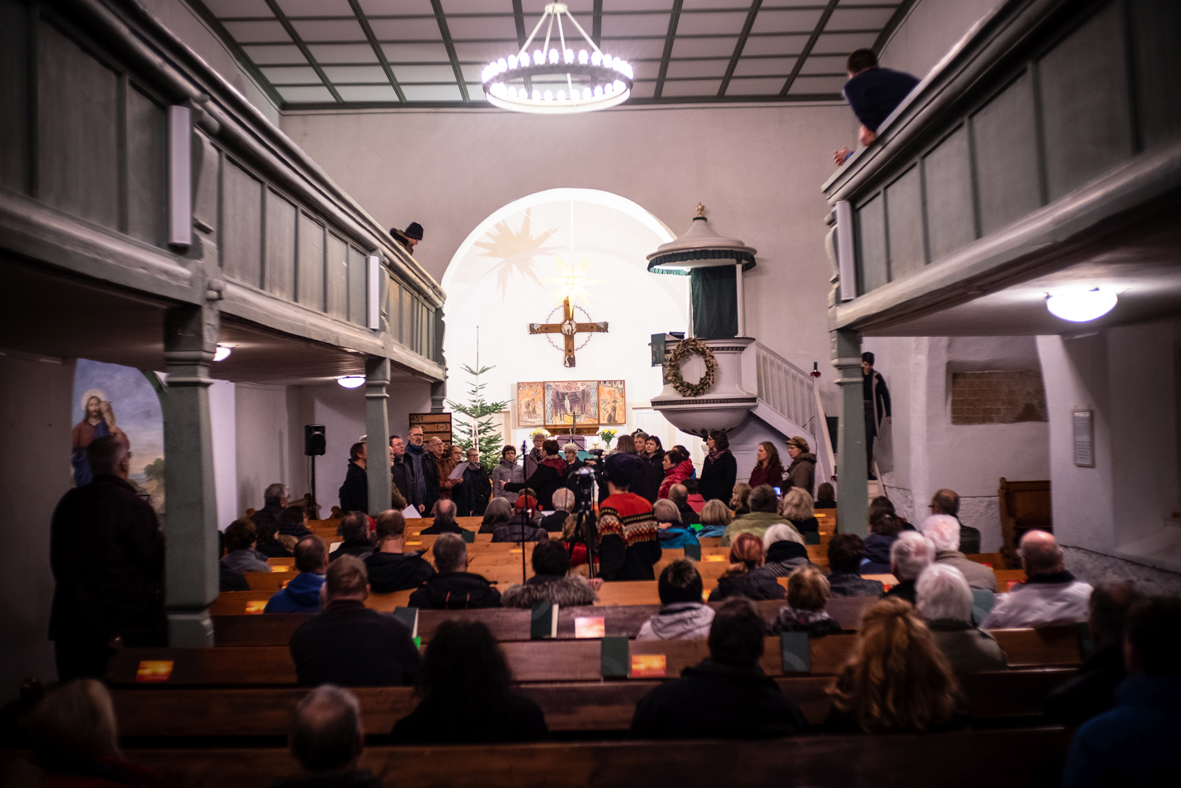
Church bells have acoustically structured life in Christian areas for centuries. Whether they are a call to prayer, a storm warning,
as a clock or a peace bell, they are part of the history of culture and communication. More than 3,000 bronze bells were confiscated
in Saxony during the First and Second World Wars in order to cast cannon barrels and ammunition parts. As far as possible,
the communities bought new bells in the post-war years, but due to a lack of money and materials, they were made of inferior steel.
This is accompanied by a difference in sound. They are thicker and smaller than bronze bells and therefore lighter and tinnier in tone.
The sound of Mutzschen's bells changed from E flat G flat (E flat major) to F sharp A sharp sharp C sharp (F sharp major).
This change experiences a participative and sculptural appreciation in the performance and installation. Together with the young community
and the citizens of Mutzschen, the church choir performed the variations on E-flat-Gb-flat and F sharp-A sharp-C sharp in a spatial composition.
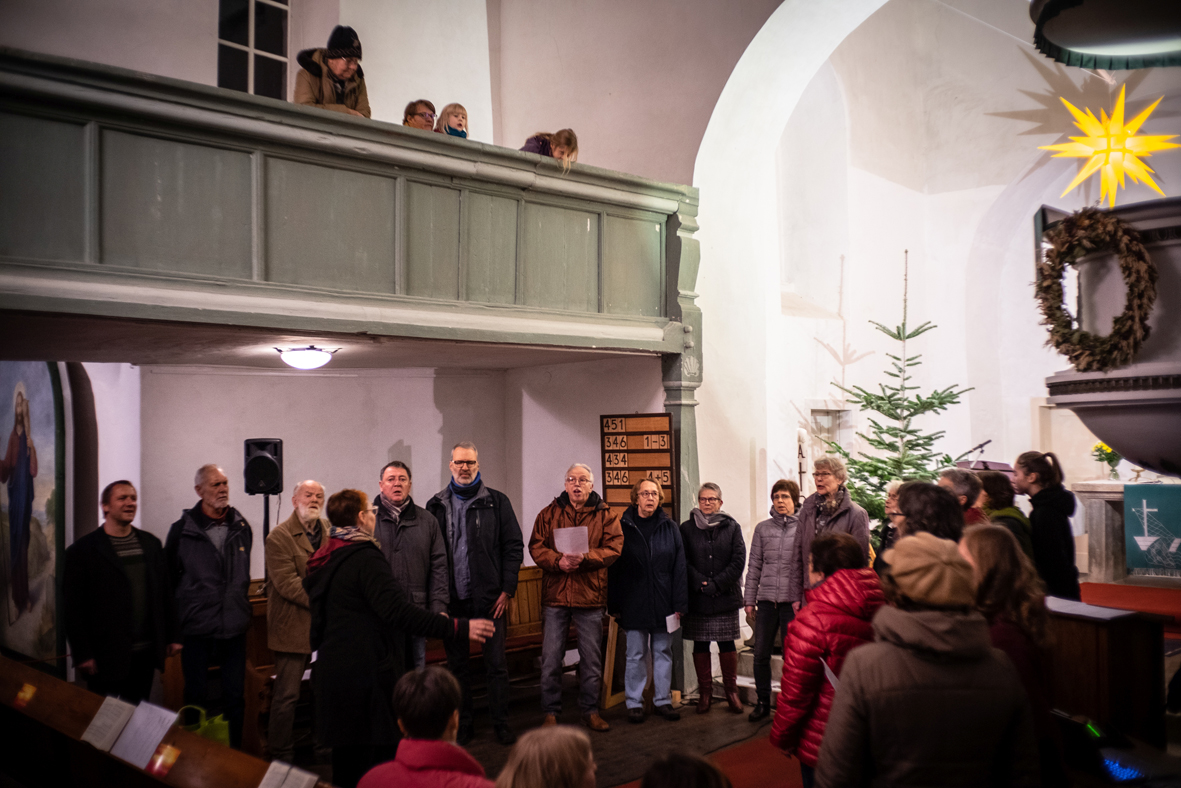

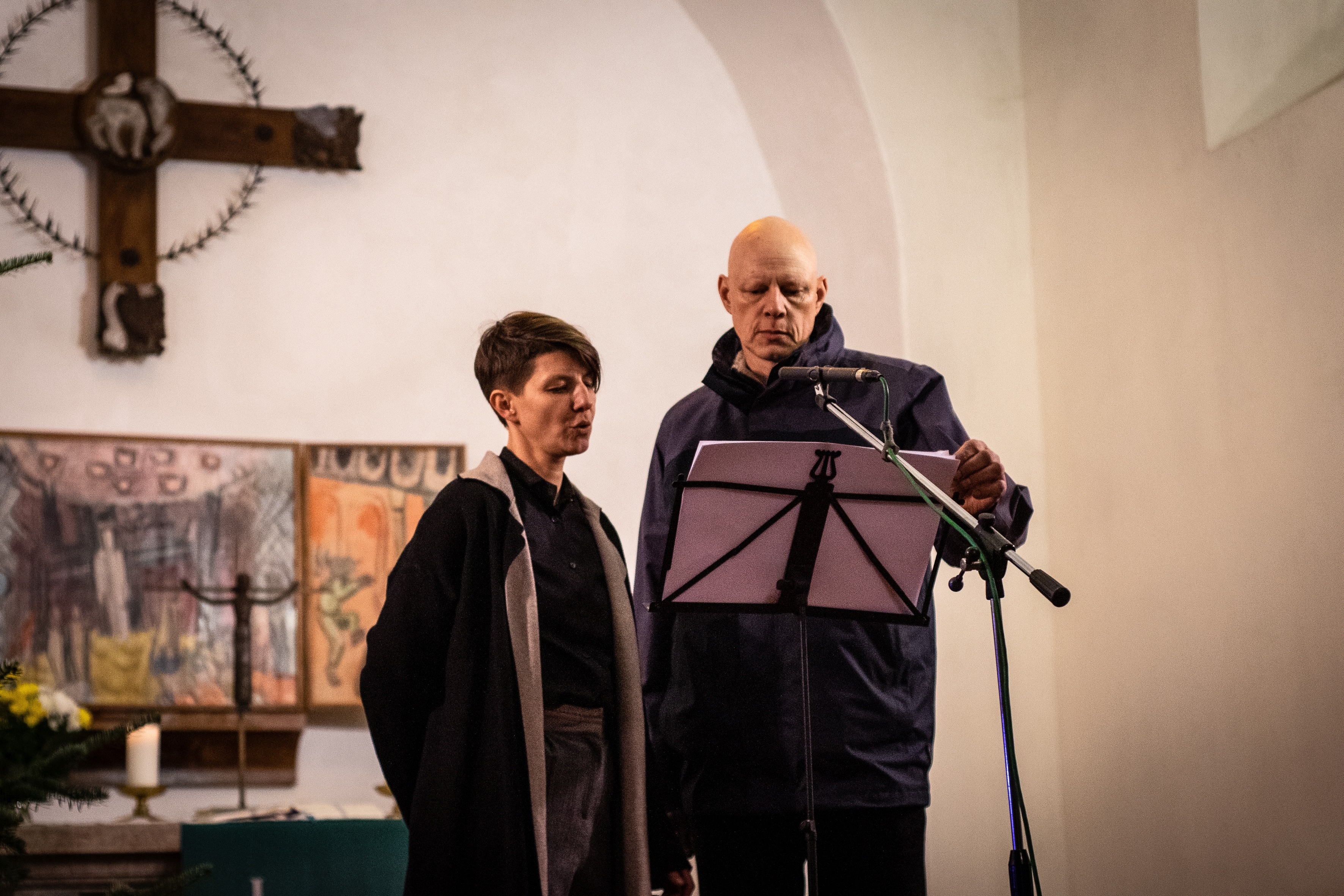

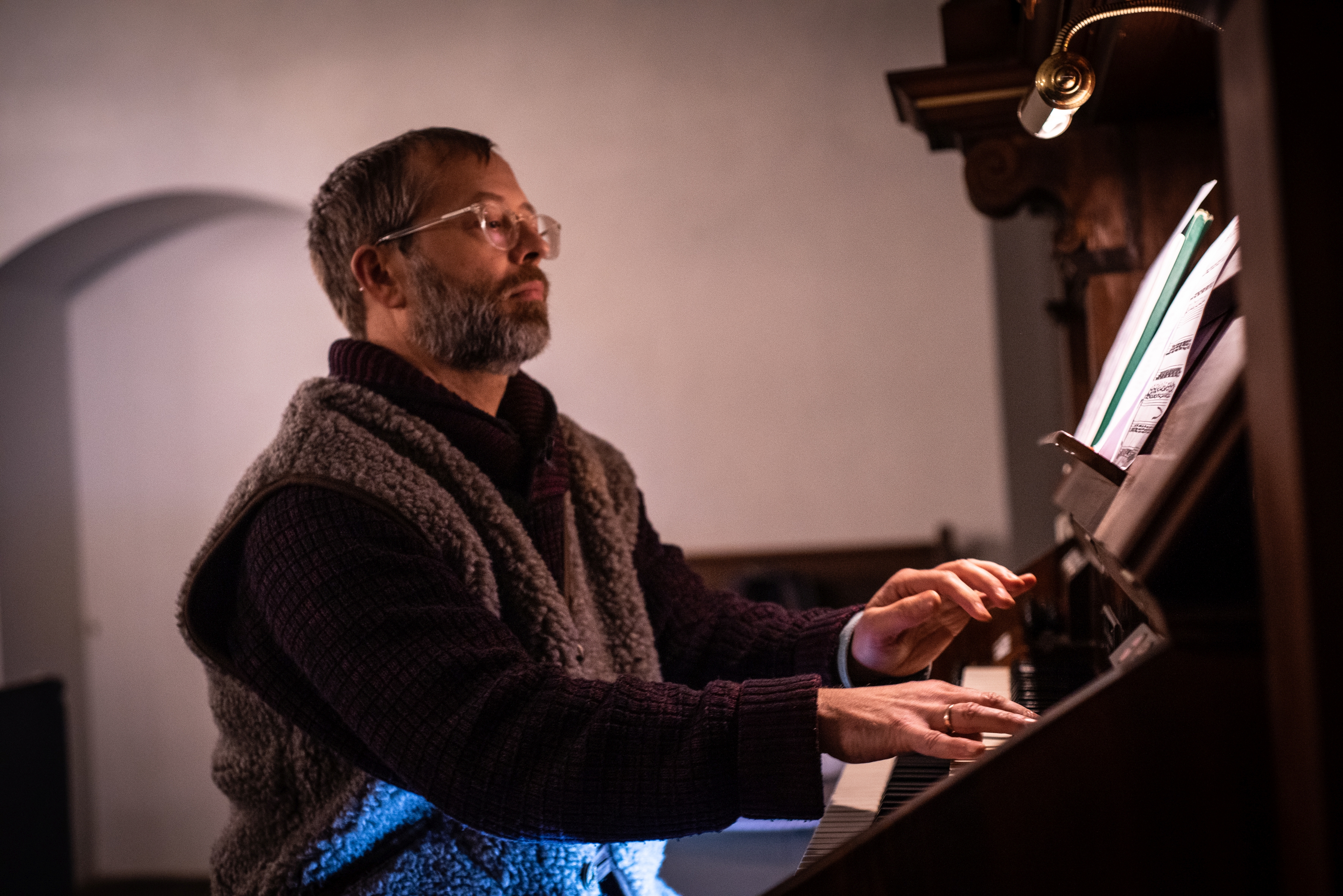
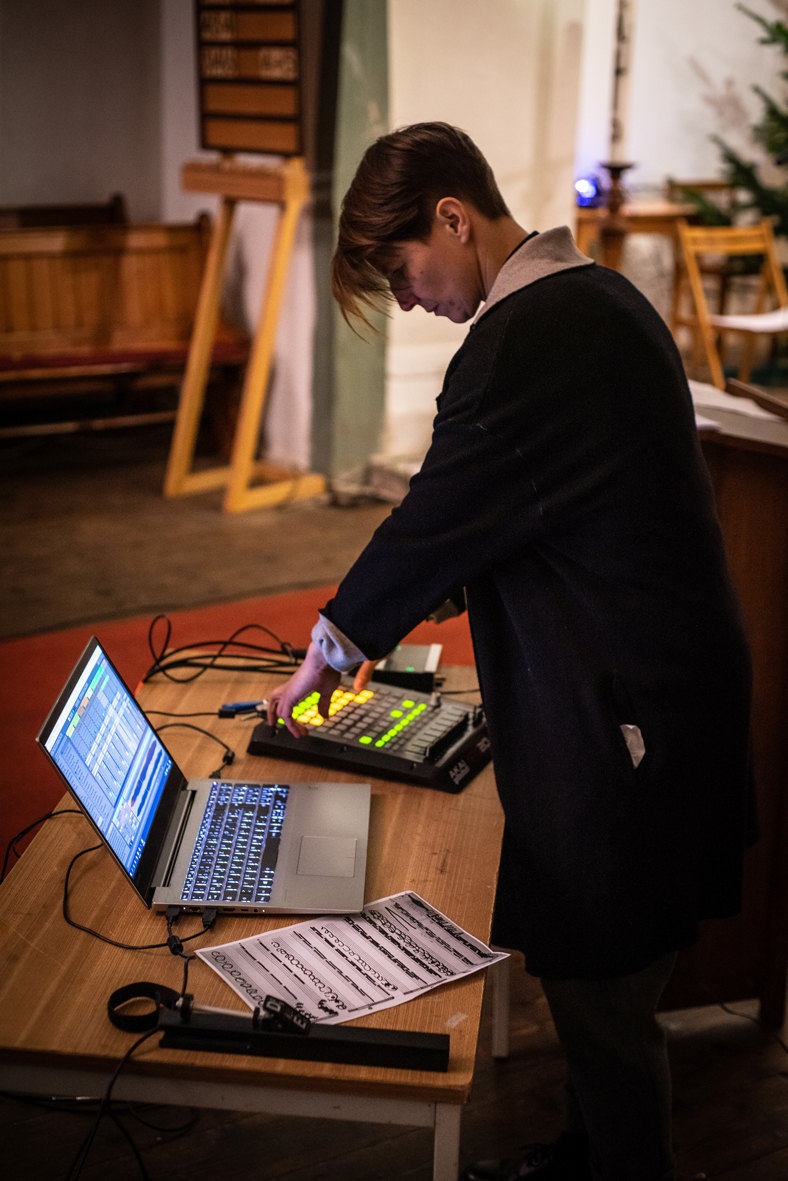
PAX was created as a visual counterpart to the concert performance "Die Glocken von Mutzschen". This tells the story of a sound shift. The bronze bells
of the town church were cast into projectile material during World War II. The purchase of inferior cast-iron bells led to a shift in the sound in Mutzschen's
everyday structure. With the PAX installation, viewers/ users can make noise for peace themselves. Red and white signal flags are attached to a mo- bile scaffolding.
These metal flags recreate the Latin word for peace "PAX" from the international angular alphabet, which can be used to communicate over long distances.
Each flag unit has cranks that can be used to make a ratchet ring. Small tubes are implied in the signal flags, which have sound cuts and begin to whistle when there
is wind. Such sound elements were used to keep the wolves away from the villages in particularly cold winters.

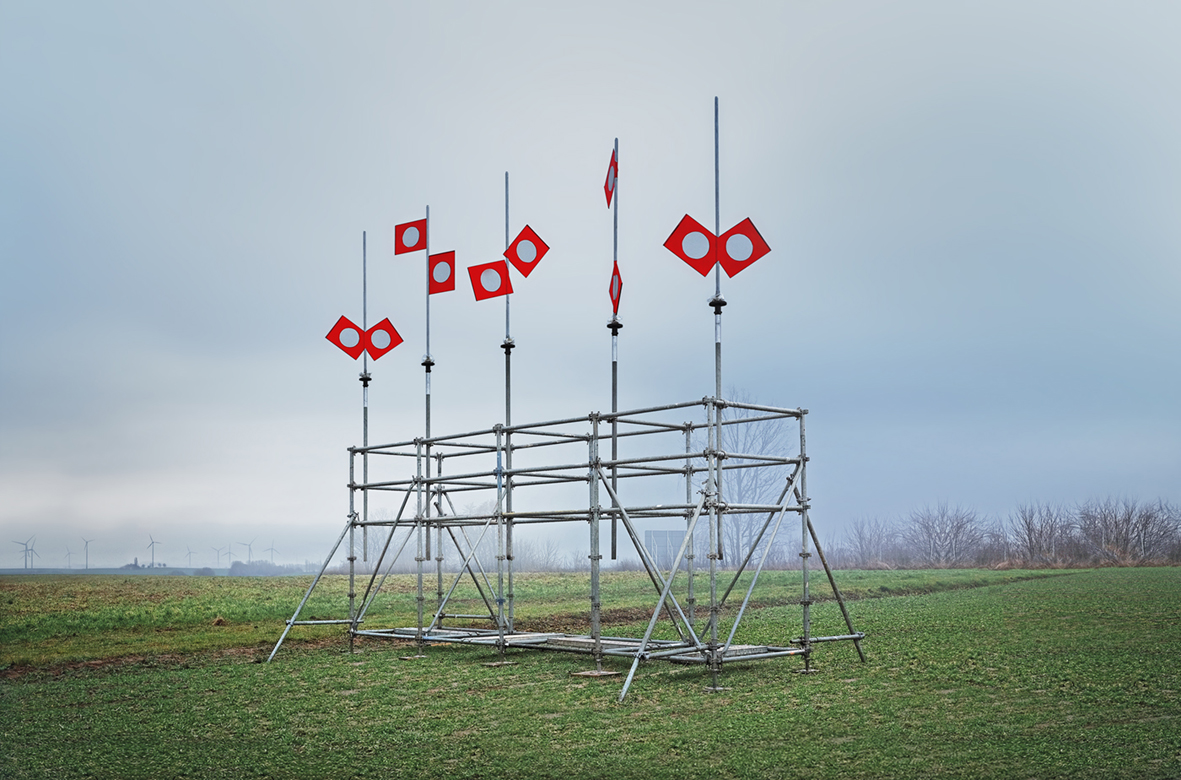

Participants: Churchchoir, Young Community and People of Mutzschen
Artistic director: Anna Schimkat
Project managment: Künstlergut Prösitz / Ute Hartwig-Schulz
Choir direktion: Katharina Nicolaus Organist: Tobias Nicolaus
Bell ringer: Gero Weigelt